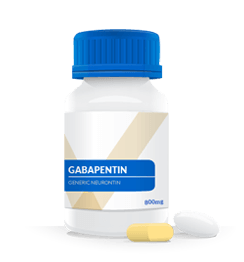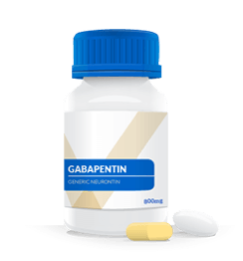drowsiness, dizziness loss of coordination, blurred vision, and unusual eye movement.
Consult a doctor to decide the right dose.
Initially, Gabapentin was introduced as a muscle relaxer and Gabapentin is an anti-seizure drug. It relaxes the overactive nerve cells and slows the neuron firing to stop the seizure. It blocks the pain signals in neuropathic pain. Though Gabapentin is not a muscle relaxer, it is used to treat restless legs syndrome (an uncontrollable urge to move the legs).
You might feel relaxed and sleepy after taking Gabapentin because it calms down the nervous system. As a result, it may make you sleepy. Sometimes, it is used by doctors to help patients sleep. So, gabapentin helps you to sleep. But this use of Gabapentin is off-label and this medication is not a sleeping pill. The FDA recognizes Gabapentin as an anticonvulsant.
Gabapentin 400mg is primarily used for treating epileptic seizures. It is also used to treat postherpetic neuralgia and moderate to severe restless legs systems. Off-label, it is used for treating anxiety and sleeplessness.
Though Gabapentin helps you battle epilepsy, restless legs syndrome, and neuropathic pain, it has certain side effects that may happen after taking it. These side effects are nausea, dizziness, drowsiness, vomiting, and sometimes, depressive and suicidal thoughts. And if you take antacids, take them at least two hours before taking Gabapentin.
During pregnancy, every medication should be prescribed by your doctor. However side effects of Gabapentin include nausea, vomiting, and dizziness and they might get worse during pregnancy. Even though there is no medical evidence relating to Gabapentin and pregnancy problems, consult your doctor before taking Gabapentin. At the same time, if you are facing any pregnancy complications, disclose them immediately to your physician.
Gabapentin is prescribed to be taken for a long time because it is given to patients with complex partial seizures, and often chronic neuropathy. It is to be taken three times a day, daily. You must take the medication every day and not miss doses. Please note that Gabapentin is not the kind of medicine that you can take as required. You must complete the full prescribed course, as mentioned by your doctor.
Doctors often advise Gabapentin before sleeping. It is because this medication has the potential to improve your slow-wave sleep and primary insomnia. Secondly, when you first start to take it, you might feel drowsy. So it is better to take the prescription drug, at night with a meal.
Gabapentin is a Gamma aminobutyric acid (GABA) analog. When you take this medication, it mimics the role of GABA and produces a relaxing effect by calming down the overexcited nerves.
Gabapentin is a widely prescribed medication for seizures, neuropathy, and restless leg syndrome. It is easily available online. But while buying gabapentin online, make sure that your site is authentic. You can buy Gabapentin online from reputable sites like Shopmed. Shopemed offers free delivery of high-quality medications and you can with one click right from your phone.
Your healthcare provider might want to want to know if you have the following conditions: 1) Lung or breathing problems. 2) Cardiovascular disease 3) Diabetes. 4) Kidney problems or are on dialysis. 5) Have or had mood problems, depression, suicidal thoughts, or behavior. 6) history of drug abuse or alcohol abuse problems. 7) pregnant, trying to become pregnant, or are breast-feeding Plus if you have a history of cardiovascular problems, avoid taking Gabapentin without consulting your doctor.
Weight gain is one of the rarest side effects of gabapentin. Usually, it is a safe medication to take. However, if you have any pre-existing condition, like hypothyroid, Cushing's, depression, insomnia, and PCOS, your weight-gaining tendencies will be triggered.










